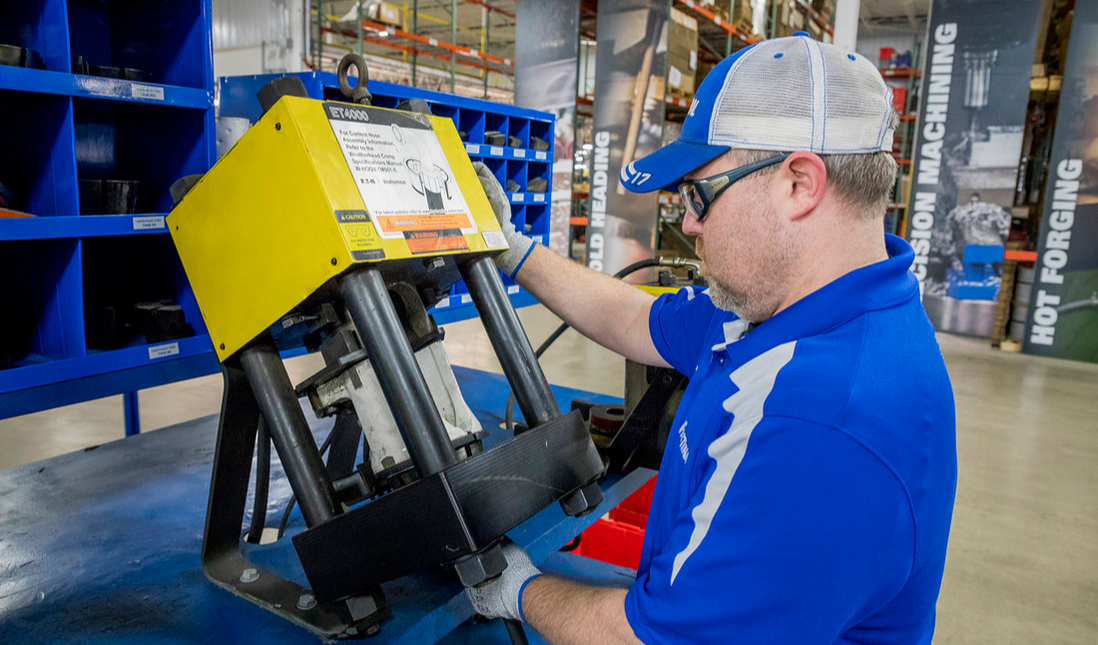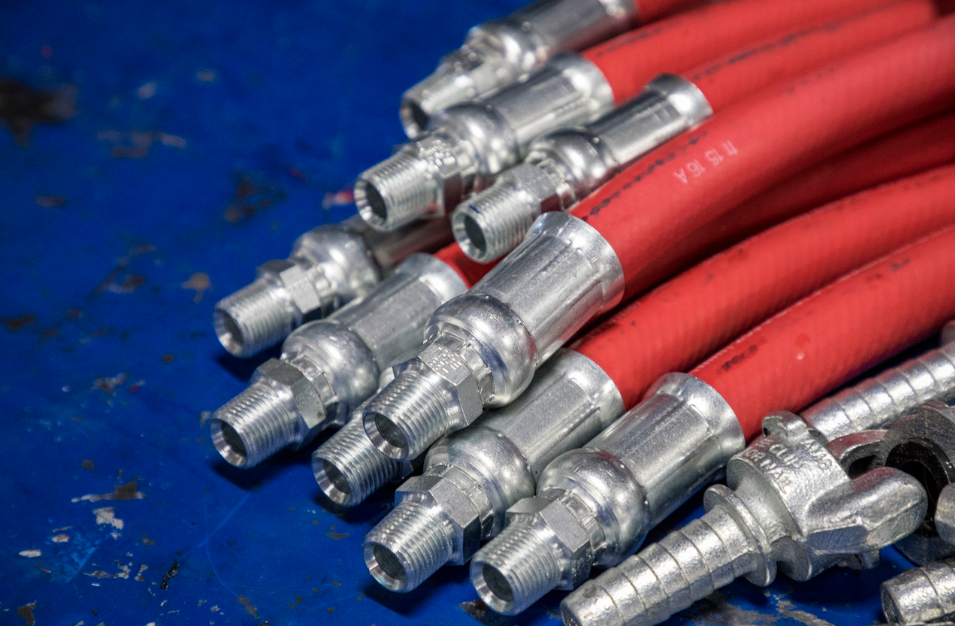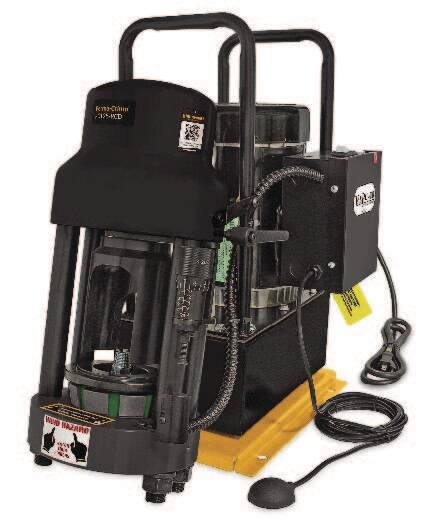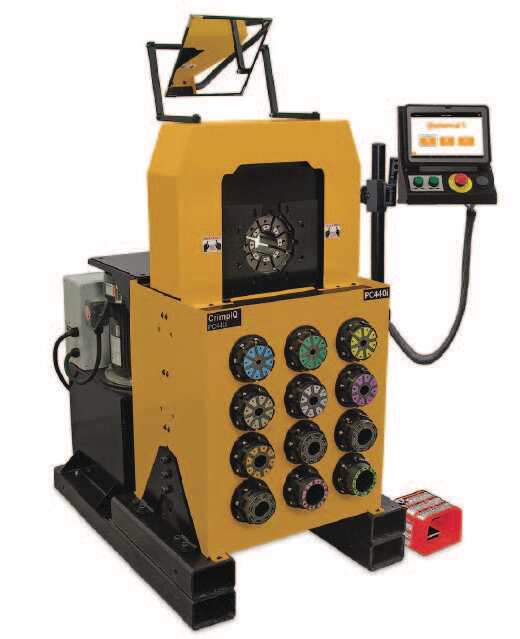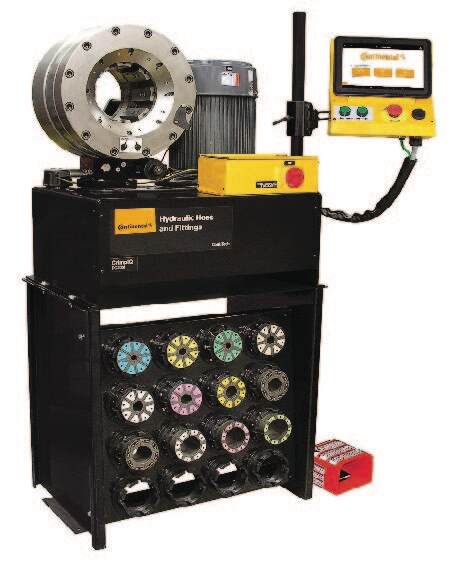What to consider when selecting hose assemblies
February 6, 2023
By Alexandra Ng, Product Application Engineer, ContiTech USA, Inc. for the Blue Print
By Alexandra Ng, Product Application Engineer, ContiTech USA, Inc. for the Blue Print
|
Selecting the proper hydraulic hose assemblies is crucial. If the hoses and couplings are rated below the working pressure of the system, the hose could leak or burst; the couplings could be blown out from the hose assemblies.
This could cause equipment failure or injuries to users. Environmental cleanup may also be required and costly. It is therefore important to consider all the parameters and requirements of a project when selecting a suitable assembly. Factors to considerAssembly Pressure Rating supply chain management, in one form or another, exists at any manufacturing enterprise. The production process of hoses, connections, and related items is not possible without building an effective control system.
Supply chain management (SCM) is a system of management strategy organization. It consists of a structured and integrated approach including the planning of production, logistics, and other processes. This ideally results in reducing costs and therefore increases demand from the customer. The hose pressure rating is usually printed on the body of the hose and available on the product page of the catalog. The coupling-rated pressure is usually available in the couplings’ sections or the appendix of the manufacturers’ catalog. It is beneficial to consult the manufacturer if this information is not available. To ensure compatibility, hoses and coupling manufacturers conduct a series of tests to ensure the robustness of the hose assemblies under working pressure and rated fluid temperature. The test pressure of impulse test per ISO and SAE includes adding 25% or 33% additional pressure to the application’s working pressure, to mimic the pressure spikes that can occur when the application is in use. A minimum requirement of 150K impulse cycle at 30 to 75 cycles/minute is required. Fluid compatibilityFluid compatibility is another very important factor to consider. Using incompatible fluids could lead to the deterioration of the tube and its cover, which will lead to premature hose failures. Industrial specifications, such as SAE, DIN, ISO, and EN, require that the hose undergo various tests to determine the effect specific fluid and media have on the polymers of both tube and cover. These tests verify that the application is suitable for the project and ensures the robustness of the assembly after it has been exposed to the fluids at a rated temperature over time.
For example, biodegradable hydraulic fluids, which are vegetable-based fluids, are now used in different applications, especially those directly in contact with water. Biodegradable hydraulic fluids have different molecular structures from other media conventionally transferred through a hose. The polymers of the tube and cover tend to react differently in these fluids. Hose manufacturers, therefore, publish fluid compatibilities to address various chemicals. If it is not available, it is best to consult with the hose manufacturers for fluid compatibility before any purchase. Connecting the hose and couplingsAs different couplings from different manufacturers have different designs, it is important to follow prescribed guidelines for selecting the proper couplings and crimp dies to achieve the crimp specifications. Any mix-and-match hoses and fittings that do not have proper crimp OD validation could lead to the fittings separating from the hose; the consequence could be significant.
Prior to crimping, it is critical to label the inserting length of the couplings on the hoses to ensure full insertion. Partial insertion could lead to couplings separation from the hose assemblies during the pressurization of the system at elevated temperatures, as the polymers of the tube and cover can soften. In some applications, the fluids can get up to 300°F. The coupling retention solely relies on the grip between the serration of the stem and the ferrule on the hose. It is therefore very important for the hose and couplings manufacturers to follow the guidelines of industrial standards, such as: SAE J514, SAEJ517, ISO 6803, and ISO 18752, to conduct design verification and product validation; this will help to confirm the robustness of the hose assemblies at the recommended crimp specification and applications’ parameters. CrimpersCrimpers apply an appropriate amount of mechanical force through the dies to secure the ferrules on the hose and stem. Each crimper requires a different amount of electric voltage to achieve the correct amount of mechanical pressure required to crimp different sizes of couplings on the hoses. Not all crimpers can crimp 2” hydraulic hoses. It is best to refer to manufacturer guidelines for pressure guides.
Some crimpers now also include additive technologies, such as Continental’s CrimpIQ technology, which are installed in the controller for easy access to crimp specifications for all hydraulic and most industrial hoses. Training videos for crimpers can also be accessed through the controllers. Final thoughtsMany hydraulic and industrial hose assembly businesses have begun to include new technology to help end-users track and manage information on hose assemblies. Labels with hose assemblies’ information, such as the date of assembly, information on components, and part numbers, can be printed out and attached to hose assemblies.
New cloud technology that connects to a central location for information about the assembly has also become more prevalent, and customers can access the information on hose assemblies to help to track data and manage inventory. This improves efficiency and decreases the downtime due to changeover. With the addition of so many innovative technologies, end users and operators have the ability efficiently assess the specific needs of each application and, taking into consideration key parameters, make an informed decision about which hose assembly will be most suitable.
Content originally from Continental. Reused here with permission. Vertical Divider
|
|

